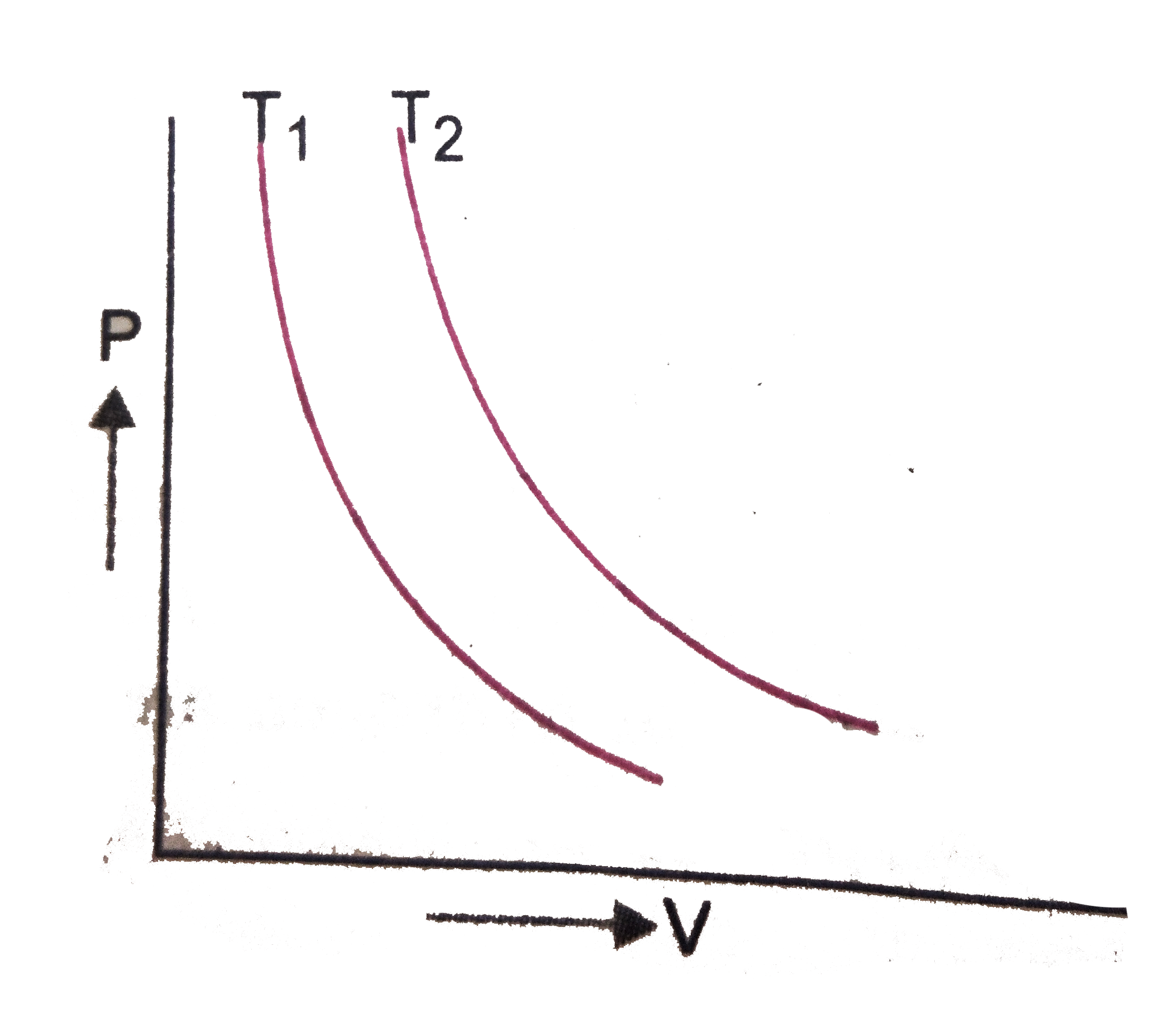Fig shows of PV/T versus P for 1.00×10−3kg of oxygen gas at two different temperatures.
(a) What does the dotted plot signify ?
(b) Which is true : T1<T2orT2<T1?
( c) What is the value of PV/T where the curves meet on the Y-axis ?
(d) If we obtained similar plot for 1.00×10−3kg of hydrogen, would we get the same value of PV/T at the point where the curves meet on the y-axis ? If not, what mass of hydrogen yield the same value of PV/T (for low pressure high temperature region of the plot) ? (Molecular mass of H=2.02u, of O=32.0u,R=8.31Jmol−1K−1

(a) The dotted plot in the graph signifies the ideal behaviour of the gas,
PVT i.e the ratio is equal .μR(μ is the number of moles and R is the universal gas constant) is a constant quality. It is not dependent on the pressure of the gas.
(b) The dotted plot in the given graph represents an ideal gas. The curve of the gas at temperature T1is closer to the dotted plot than the curve of the gas at temperature T2. A real gas approaches the behaviour of an ideal gas when its temperature increases. Therefore, T1>T2 is true for the given plot.
(c) The value of the ratio PV/T, where the two curves meet, is μR. This is because the ideal gas equation is given as:
PV=μRT
PVT=μR
Where
P is the pressure
T is the temprature
V is the volume
μis the number of moles
R is the universal consatn
Molecular mass of oxgen =32.0 g
Mass of oxygen =1×10−3kg=1g
R=8.314Jmole−1K−1
thereforPVT=132×8.314
=0.26JK−1 Therefore, the value of the ratio PV/T, where the curves meet on the y-axis, is
(d) If we obtain similar plots for 1.00×10–3 kg of hydrogen, then we will not get the same value of PV/T at the point where the curves meet the y-axis. This is because the molecular mass of hydrogen (2.02 u) is different from that of oxygen (32.0 u).
We have: PVT=0.26JK−1
R=8.314Jmole−1K−1
Molecular mass (M) of H2 =2.02 u
PVT=μRat constant temperature
Where μ=mM
m=Mass ofH2
∴m=PVT×MR
=0.26×2.028.31
=6.3×10–2g=6.3×10–5 kg of H2will yield the same value of PV/T.
Related Playlists
Similar Questions
Figure shows plot of PV/T versus Pfor1.00×10−3 kg of oxygen gas at two different temperatures.
(i) What does the dotted plot signify?
(ii) Which is true . T1>T2orT1<T2?
(iii) What is the value of PV/T where the curves meet on the y-axis?_E01_262_Q01.png) View Solution
View SolutionFigure shows plot of PV/T versus Pfor1.00×10−3 kg of oxygen gas at two different temperatures.
(i) What does the dotted plot signify?
(ii) Which is true . T1>T2orT1<T2?
(iii) What is the value of PV/T where the curves meet on the y-axis?_E01_262_Q01.png) View Solution
View SolutionThe figure shows the graph of pVT versus p for 2×10−4 kg of hydrogen gas at two different temperatures, where p,V andT represents pressure, volume and temperature respectively. Then, the value of pVT where the curve meet on the vertical axis, is
 View Solution
View SolutionIf lines T1andT2 touch the curve y=x2−3x+2 at the points where the curve meets the X- axis, then
View SolutionShown below are the black body radiation curves at temperature T1 and T2(T2>T1). Which of the following plots is correct?
View SolutionFigure shows graphs of pressure versus density for an ideal gas at two temperatures T1 and T2 Which is correct ?
 .View Solution
.View SolutionFigure shows graphs of pressure versus density for an ideal gas at two temperatures T1 and T2 Which is correct ?
 .View Solution
.View SolutionIsothermal curves for a given mass of gas are shown at two different temperture T1andT2 in Fig. State whether T1>T2orT2>T1. Justify your answer.
 View Solution
View SolutionThe product of PV is plotted against P at two temperatures T1 and T2 and the result is shown in figure. What is correct about T1 and T2?
 View Solution
View SolutionGiven is the graph between PVT and P for 1 gm of oxygen gas at two different temperatures T1andT2 Fig. Given, density of oxygen =1.427kgm−3. The value of (PV)/(T) at the point A and the relation between T1andT2 are respectively :
 View Solution
View Solution

